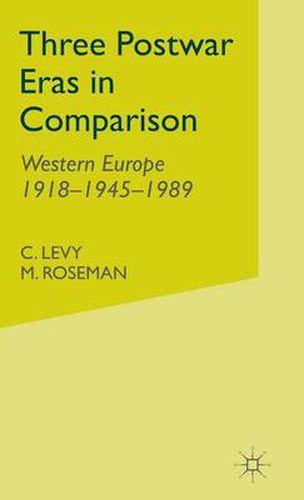Readings Newsletter
Become a Readings Member to make your shopping experience even easier.
Sign in or sign up for free!
You’re not far away from qualifying for FREE standard shipping within Australia
You’ve qualified for FREE standard shipping within Australia
The cart is loading…






This title is printed to order. This book may have been self-published. If so, we cannot guarantee the quality of the content. In the main most books will have gone through the editing process however some may not. We therefore suggest that you be aware of this before ordering this book. If in doubt check either the author or publisher’s details as we are unable to accept any returns unless they are faulty. Please contact us if you have any questions.
A brief glance at twentieth century European history would suggest that wars and their aftermath produced the major turning points in its development. Three times - in 1918, 1945 and again in 1989 - Europe was confronted with major questions of restructuring and rebuilding. But can we really divide Europe’s development into neat postwar eras? Why was the period 1945-1989 so much more stable and prosperous than 1918-1939? Has the end of the cold war changed the basis of the post-1945 settlement? This comparative collection offers some unique insights into these questions.
$9.00 standard shipping within Australia
FREE standard shipping within Australia for orders over $100.00
Express & International shipping calculated at checkout
This title is printed to order. This book may have been self-published. If so, we cannot guarantee the quality of the content. In the main most books will have gone through the editing process however some may not. We therefore suggest that you be aware of this before ordering this book. If in doubt check either the author or publisher’s details as we are unable to accept any returns unless they are faulty. Please contact us if you have any questions.
A brief glance at twentieth century European history would suggest that wars and their aftermath produced the major turning points in its development. Three times - in 1918, 1945 and again in 1989 - Europe was confronted with major questions of restructuring and rebuilding. But can we really divide Europe’s development into neat postwar eras? Why was the period 1945-1989 so much more stable and prosperous than 1918-1939? Has the end of the cold war changed the basis of the post-1945 settlement? This comparative collection offers some unique insights into these questions.